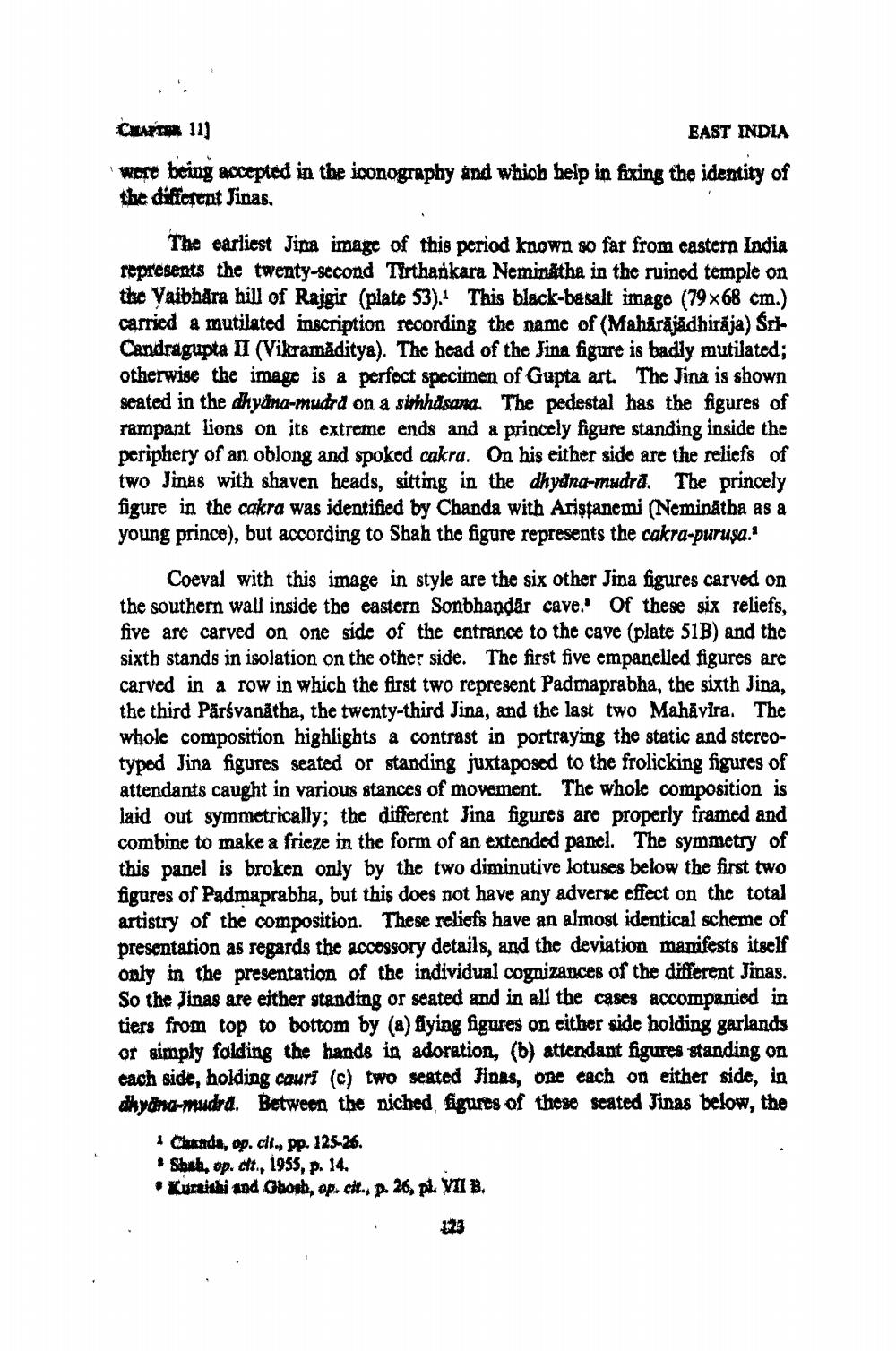________________
EAST INDIA
were being accepted in the iconography and whioh help in fixing the identity of the differcut Jinas.
The earliest Jina image of this period known so far from eastern India represents the twenty-second Tirthadkara Neminátha in the ruinod temple on the Vaibhåra hill of Rajgir (plate 53). This black-basalt image (79x68 cm.) carried a mutilated inscription reoording the name of (Mahārājādbirāja) SriCandragupta I (Vikramaditya). The head of the Jina figure is badly mutilated; otherwise the image is a perfect specimen of Gupta art. The Jina is shown seated in the dhyana-mudra on a simhasand. The pedestal has the figures of rampant lions on its extreme ends and a princely figure standing inside the periphery of an oblong and spoked cakra. On his either side are the reliefs of two Jinas with shaven heads, sitting in the dhydna-mudra. The princely figure in the cakra was identified by Chanda with Aristancmi (Neminātha as a young prince), but according to Shah the figure represents the cakra-purusa."
Coeval with this image in style are the six other Jina figures carved on the southern wall inside the eastern Sonbhandar cave.' Of these six reliefs, five are carved on one side of the entrance to the cave (plate 51B) and the sixth stands in isolation on the other side. The first five empanelled figures are carved in a row in which the first two represent Padmaprabha, the sixth Jina, the third Pärsvanátha, the twenty-third Jina, and the last two Mahāvira. The whole composition highlights a contrast in portraying the static and stereotyped Jina figures seated or standing juxtaposed to the frolicking figures of attendants caught in various stances of movement. The whole composition is laid out symmetrically; the different Jina figures are properly framed and combine to make a frieze in the form of an extended panel. The symmetry of this panel is broken only by the two diminutive lotuses below the first two figures of Padmaprabha, but this does not have any adverse effect on the total artistry of the composition. These reliefs have an almost identical scheme of presentation as regards the accossory details, and the deviation manifests itself only in the presentation of the individual cognizances of the different Jinas. So the Jinas are either standing or seated and in all the cases accompanied in tiers from top to bottom by (a) flying figures on either side holding garlands or simply folding the hands in adoration, (b) attendant figures standing on each side, holding cauri (c) two seated Finas, one cach on either side, in wthyana-mudra. Between the niched figures of these seated Jinas below, the
* Chanda, op. cit., pp. 125-26.
Shah, op. cit., 1955, p. 14. • Kutaishi and Obork, op. cit., p. 26, pl. VII B.
23




